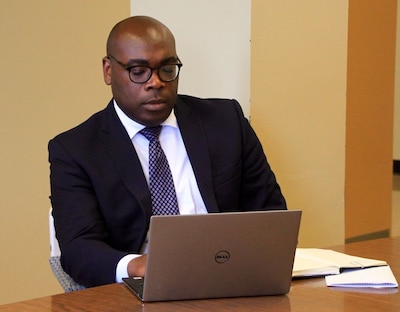Say your home air conditioner dies, and it’s August in Memphis. You don’t have enough in your checking account to cover the cost of a new one, but you have just enough in savings. The problem: After you’ve cleaned out savings, what if your car breaks down too?
That’s part of the rationale behind Shelby County Schools’ $84 million “rainy day” fund.
“I look at it as, ‘What (amount) do you feel comfortable with, not only for the short-term risk but the long-term risk?’” Finance Chief Lin Johnson told school board members last month in explaining the rationale behind the district’s fund.
Still, the stockpiled cash has raised eyebrows in a district serving a large number of impoverished students — as its leaders complain of being woefully underfunded by the state. (The district’s funding lawsuit against the state continues to wind through the courts.)
As the district’s fiscal year ended on June 30, the stash actually could have been more than $84 million. But in May, the school board asked Superintendent Dorsey Hopson to begin shifting more savings to address a backlog of needs — for instance, hiring more school personnel and repairing aging buildings. His administration responded with $33 million in reallocations.
Johnson warned that the board should tread lightly when raiding the fund. Here are some frequently asked questions:
Why does Shelby County Schools have a rainy day fund?
The district needs some padding to cover expenses throughout the school year as it waits for revenue from dozens of sources ranging from federal Title I funding to various government and philanthropic grants. While the money flows in at different times, the district still needs cash to operate without interrupting services. This fund keeps everything running smoothly and also is available for emergencies.
Do similar school districts keep this level of cash?
Between 4 and 12 percent of a district’s operating budget is standard practice, according to the Council of Great City Schools, a group of urban school districts that share data on best practices in academics and operations. Shelby County Schools reserves about 8 percent. Johnson, who is considered a conservative budgeter, would like to see a rainy day fund of between 10 and 15 percent.

“I am not comfortable with 8 percent,” he told board members. “If we’re over 15, I think the administration needs to provide a plan to spend that down so we’re not having an excessive fund balance.”
Still other government organizations are even more conservative about having savings on hand. The Government Finance Officer Association recommends no less than two months of operating expenses, or 16.7 percent. If Shelby County Schools followed that standard, its savings would stand at $164 million. (The association notes that large cities, counties or school districts need less cash on hand because they’re better able to predict risks.)
But shouldn’t that money go to schools and kids?
In some ways, it already does. Part of the purpose behind reserves is to support services for students. But if it’s excessive, then it takes away from kids in the classroom. It’s the job of school board members like Kevin Woods to determine how much is enough.
“If there are great things we need to be accomplished right now… then we probably should try to get those things done and not keep that money in the bank,” Woods said.
At the same time, Woods cites concerns about proposed federal budget cuts that could trickle down to districts.
That’s the tension.
How does the district figure out how much cash to stash?
Shelby County Schools weighs risks, some specific to the district and some that apply to any school system. Memphis leaders are closely watching the possibility of private school vouchers being introduced in Shelby County under a proposal in the legislature. The growth of the city’s charter sector and municipal districts, as well as the possibility of more school takeovers by the state-run Achievement School District, also have the potential of siphoning off funding from Shelby County Schools. Then there are the usual challenges such as changes in state and federal funding and increases in the share of students with disabilities.

